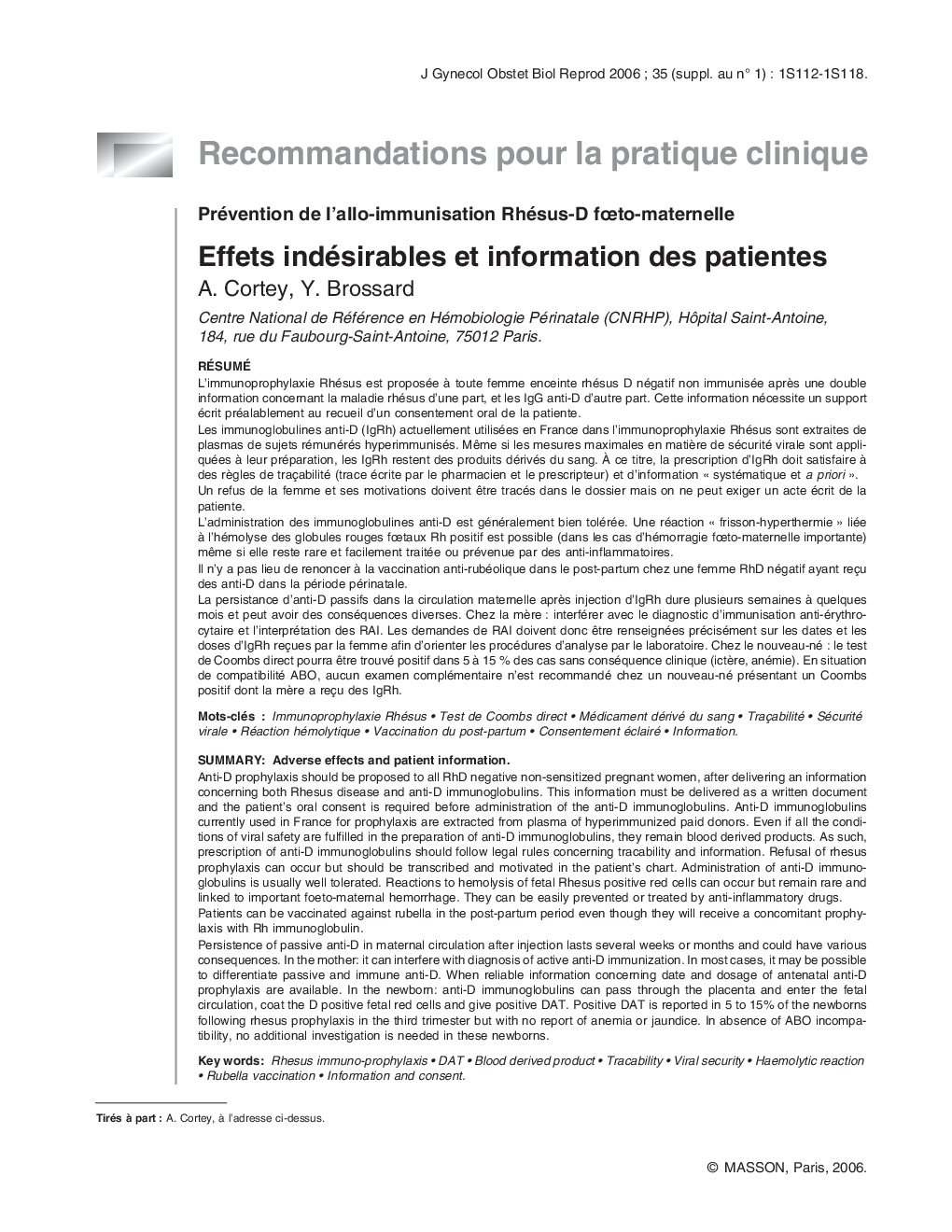| Article ID | Journal | Published Year | Pages | File Type |
|---|---|---|---|---|
| 3274002 | Journal de Gynécologie Obstétrique et Biologie de la Reproduction | 2006 | 7 Pages |
Abstract
Persistence of passive anti-D in maternal circulation after injection lasts several weeks or months and could have various consequences. In the mother: it can interfere with diagnosis of active anti-D immunization. In most cases, it may be possible to differentiate passive and immune anti-D. When reliable information concerning date and dosage of antenatal anti-D prophylaxis are available. In the newborn: anti-D immunoglobulins can pass through the placenta and enter the fetal circulation, coat the D positive fetal red cells and give positive DAT. Positive DAT is reported in 5 to 15% of the newborns following rhesus prophylaxis in the third trimester but with no report of anemia or jaundice. In absence of ABO incompatibility, no additional investigation is needed in these newborns.
Related Topics
Health Sciences
Medicine and Dentistry
Endocrinology, Diabetes and Metabolism
Authors
A. Cortey, Y. Brossard,
